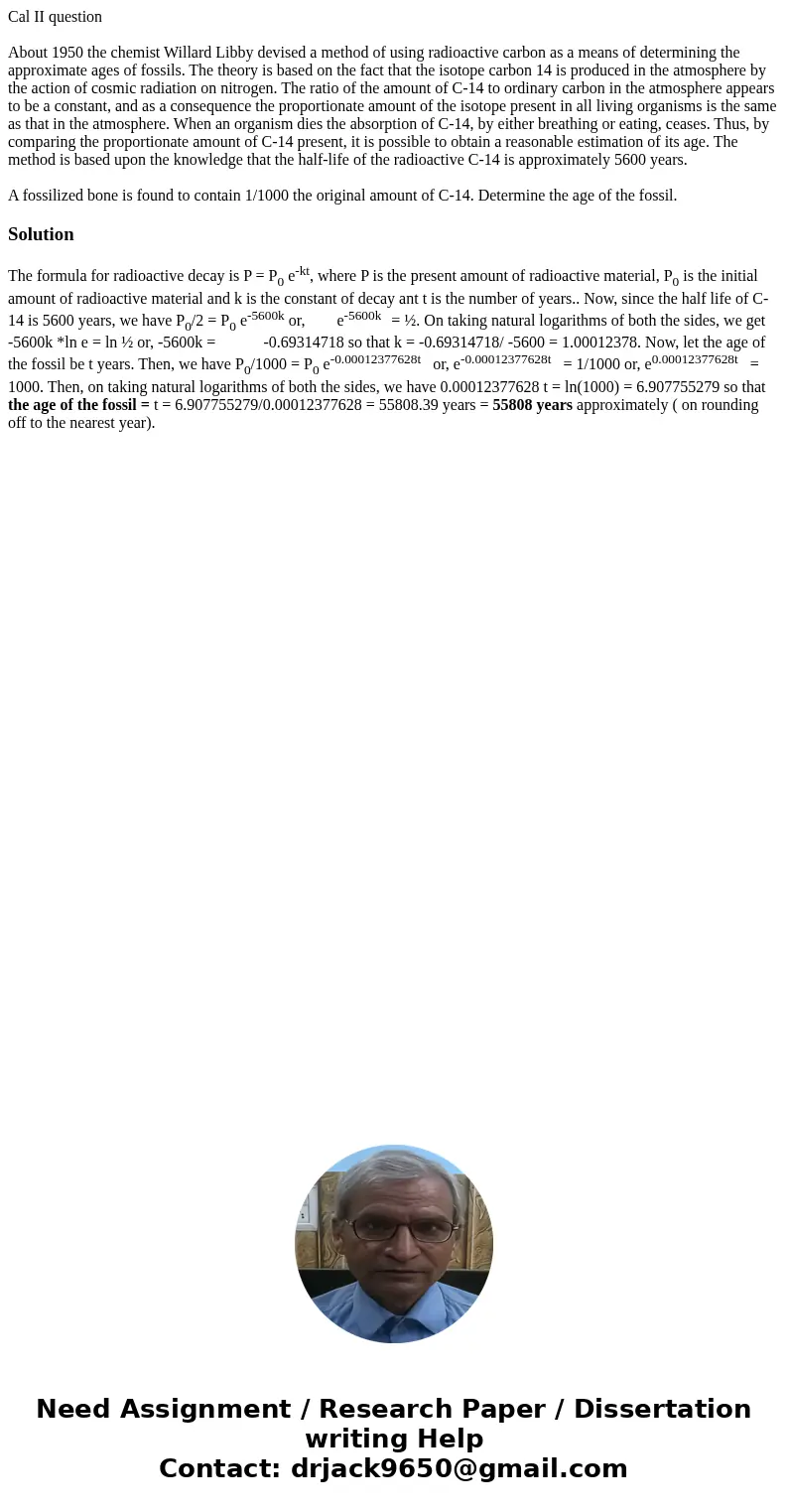Cal II question About 1950 the chemist Willard Libby devised
Cal II question
About 1950 the chemist Willard Libby devised a method of using radioactive carbon as a means of determining the approximate ages of fossils. The theory is based on the fact that the isotope carbon 14 is produced in the atmosphere by the action of cosmic radiation on nitrogen. The ratio of the amount of C-14 to ordinary carbon in the atmosphere appears to be a constant, and as a consequence the proportionate amount of the isotope present in all living organisms is the same as that in the atmosphere. When an organism dies the absorption of C-14, by either breathing or eating, ceases. Thus, by comparing the proportionate amount of C-14 present, it is possible to obtain a reasonable estimation of its age. The method is based upon the knowledge that the half-life of the radioactive C-14 is approximately 5600 years.
A fossilized bone is found to contain 1/1000 the original amount of C-14. Determine the age of the fossil.
Solution
The formula for radioactive decay is P = P0 e-kt, where P is the present amount of radioactive material, P0 is the initial amount of radioactive material and k is the constant of decay ant t is the number of years.. Now, since the half life of C-14 is 5600 years, we have P0/2 = P0 e-5600k or, e-5600k = ½. On taking natural logarithms of both the sides, we get -5600k *ln e = ln ½ or, -5600k = -0.69314718 so that k = -0.69314718/ -5600 = 1.00012378. Now, let the age of the fossil be t years. Then, we have P0/1000 = P0 e-0.00012377628t or, e-0.00012377628t = 1/1000 or, e0.00012377628t = 1000. Then, on taking natural logarithms of both the sides, we have 0.00012377628 t = ln(1000) = 6.907755279 so that the age of the fossil = t = 6.907755279/0.00012377628 = 55808.39 years = 55808 years approximately ( on rounding off to the nearest year).

 Homework Sourse
Homework Sourse